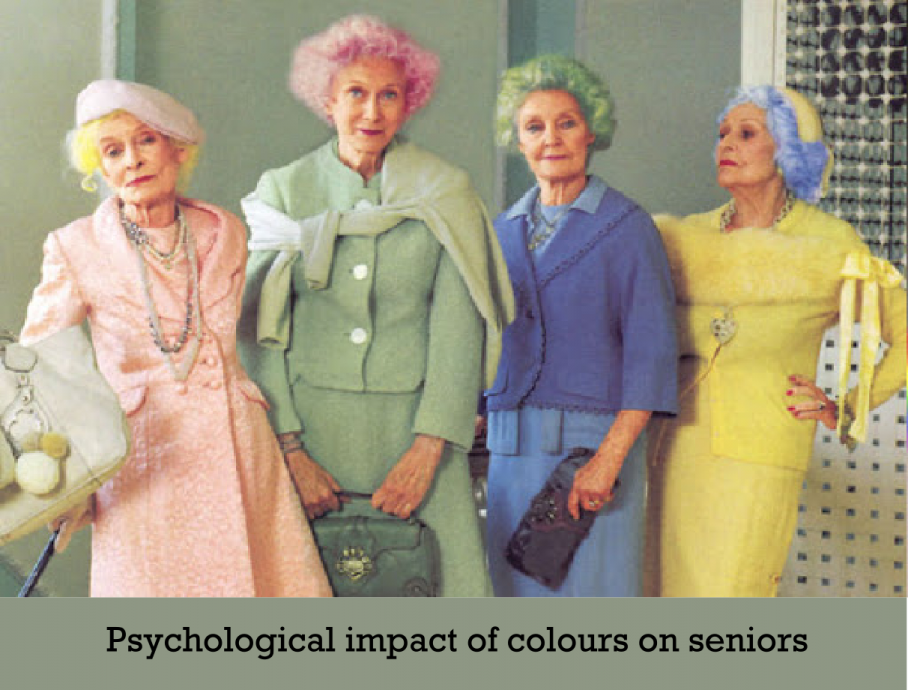
Colours expose different series of emotions from person to person. There are various reasons behind how colours influence a person’s emotion. For example, a person’s favorite toy may be red therefore throughout their life they might always have a greater place for red in their heart. On the contrary, they might have been hit by a red bike in their childhood which might have created a negative impact on the colour red in their life.
However, colours might also have uniform emotion throughout the entire human race. For example, Green colour is often associated with nature which offers a fresh feel and blue colour is related with sky and water which gives a calming effect.
Every color is different and is associated with different emotions. The use of color can affect the emotions and moods of seniors viewing those colors. Choosing colors wisely can have a lot of positive impact on them. Let us look into the broad classification of these colors with each of them explained.
Warm Colors
Warm colors in general are the ones which include the shades of red, yellow and orange. Warm colors are energetic and active for those who look at them.
RED - The color which is highly denoted for love and passion. On the other hand, it can be associated with warnings, danger and anger ( “Red in anger”) Red’s psychological impact can be felt in increasing respiration and heart rate.
Orange - Orange is associated with autumn leaves and seasons transitions making people think of change when they see it. Orange makes one look into the longer picture of life.
Yellow - Do you know that the yellow is considered to be the happiest hue in the colors? Even all the emojis are in yellow. It is associated with sunshine and hope.
Cool Colors
Cool colors are more calm and relaxed than warm colors of red, orange and yellow. Cool colors are the ones which include the shade of blue, green and purple.
Blue - The color of the sky and the oceans which cover 71% of the earth. Blue is calming and also represents honesty and loyalty. Blue calms the nerves and helps to relax
Green - Green represents life and new beginnings since it is the prominent color of nature. Green is also associated with money, stability and protection, particularly in darker shades.
Purple - Purple is the color of luxury and royalty. Lighter purple such as lavender are more romantic and are associated with the springtime.
Neutral colors are mostly used to bring out and reinforce other colors in the palette. The common neutral colors are black, white, gray and brown
Black - Black suits with any color for contrast. Black is associated with elegance and finishing
White - Signifies pure and innocence and linked to cleanliness. White brings about peace in the heart
Gray - Gray can seem subtle and powerful if used in the right context and background. This goes very much in union with cool and warm colors
Brown - Brown is associated with soil and strength. Often used in association with nature for green.
Do you know that we do not actually see colors with our eyes, but with our brains? Our eyes are important in detecting and responding to the light, but are the brain’s occipital lobes which process colors and make us differentiate between millions of colors. These colors are determined by the wavelength of these colors.
The main takeaways from all of this are that colors play a vital role in impacting the psychological mood of seniors and that there is simply no single correct color.
Author: Team 60plus India
Keywords: Colour, color, emotions, psychological,green, blue, red
Tags: #colours #colors #seniors #elders #seniorcitizen #green #blue #red #orange #grey #violet #purple #psychological #emotion #feel #calmingeffect #calm #joy #happiness